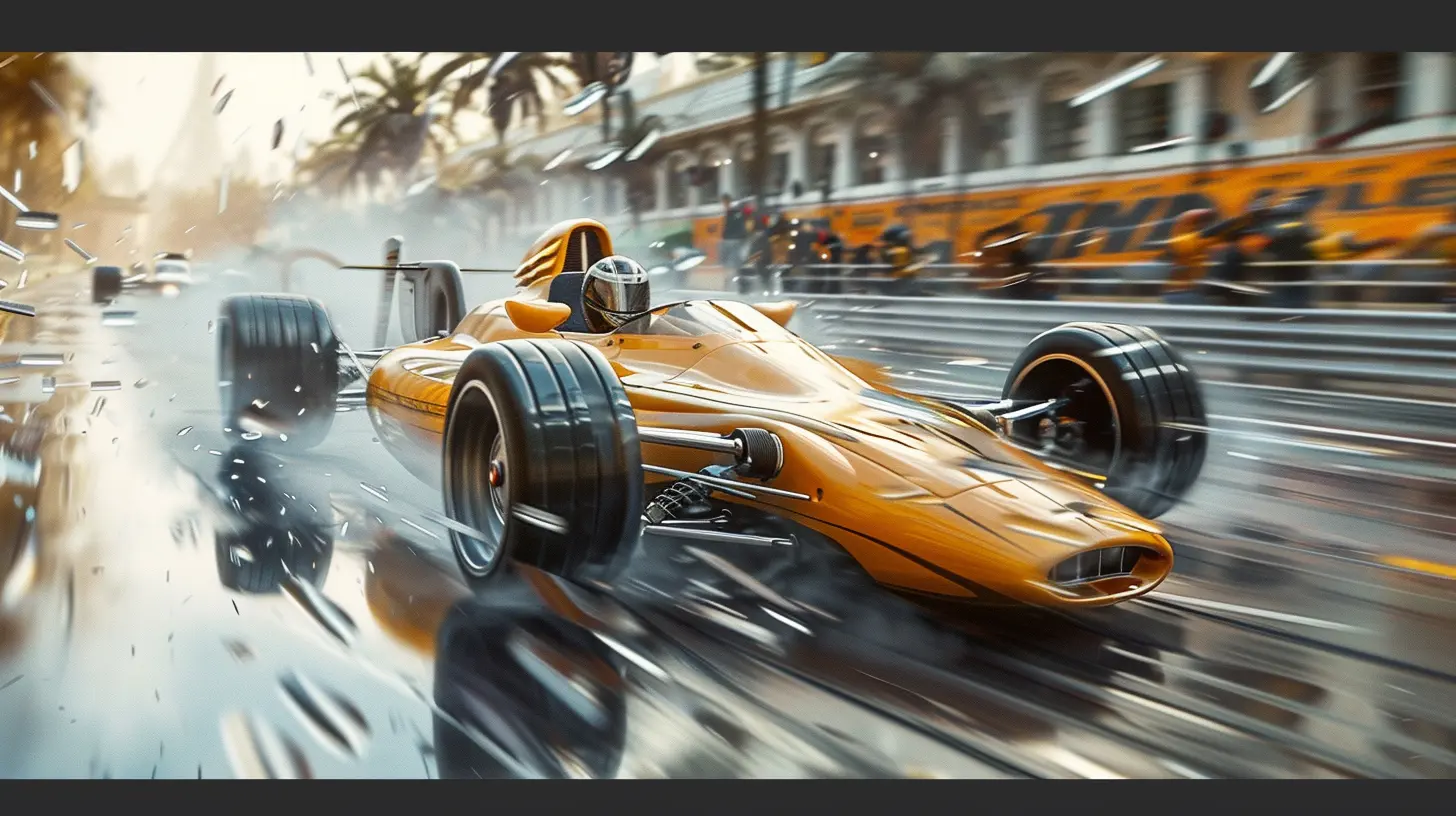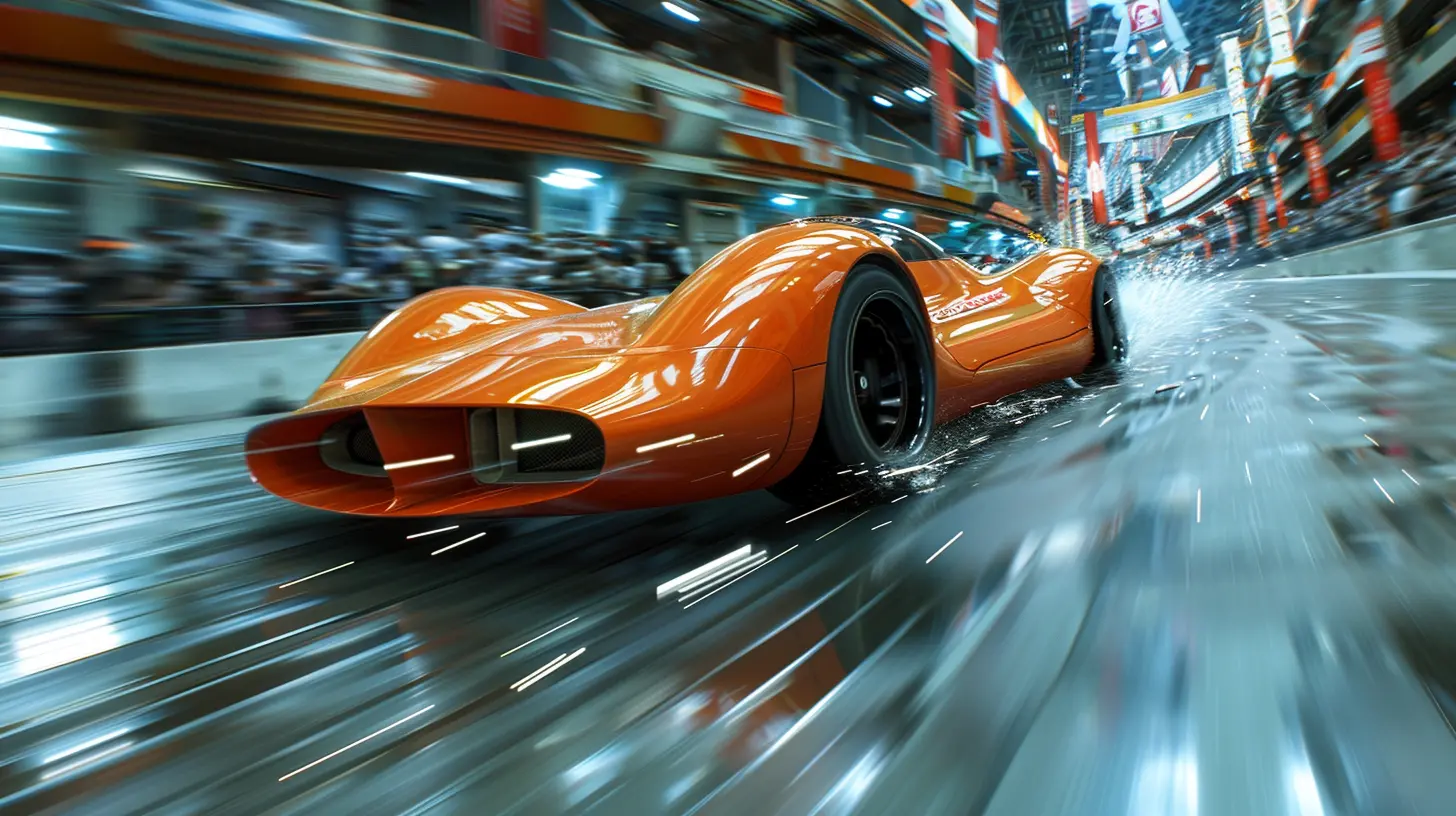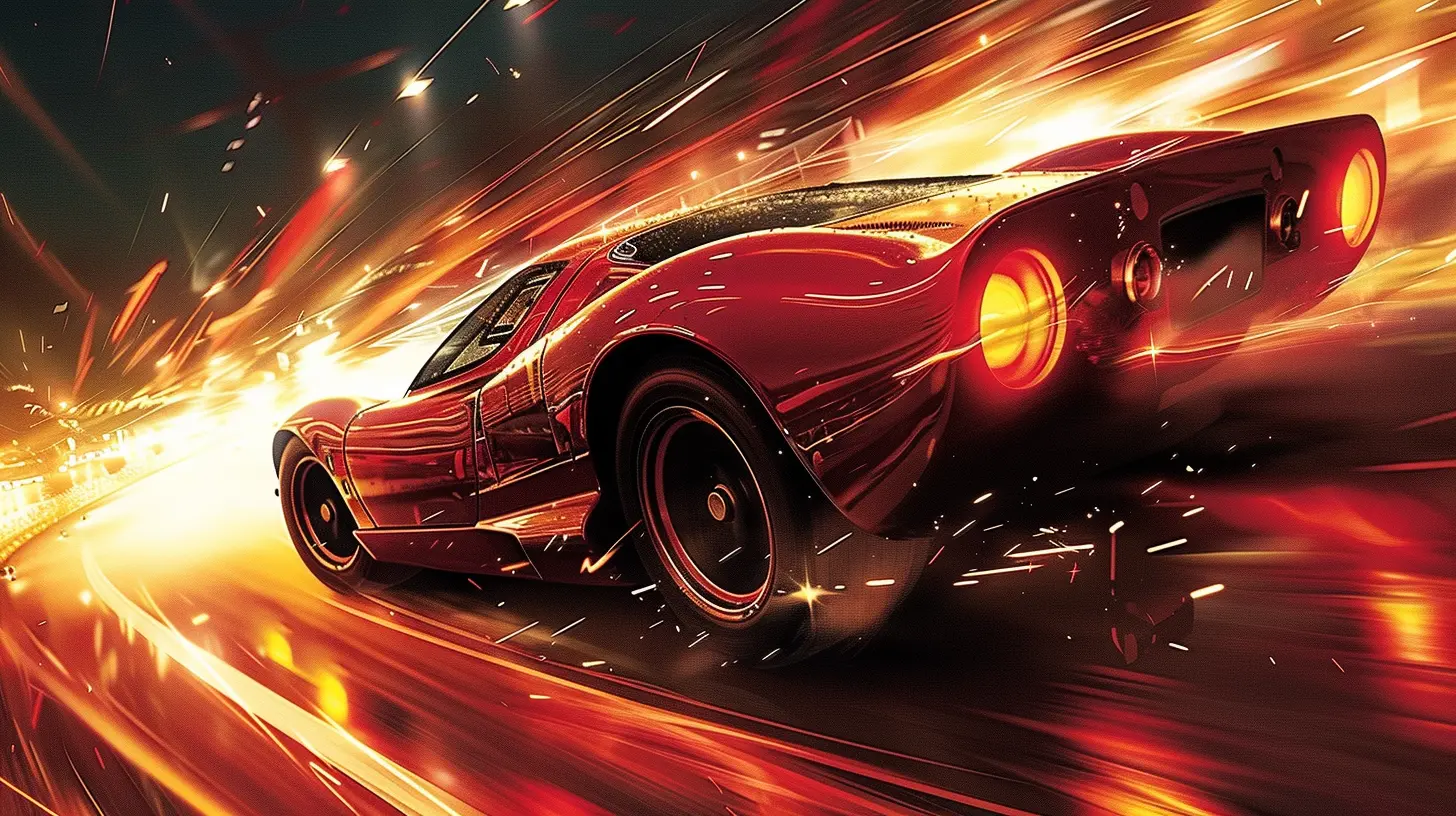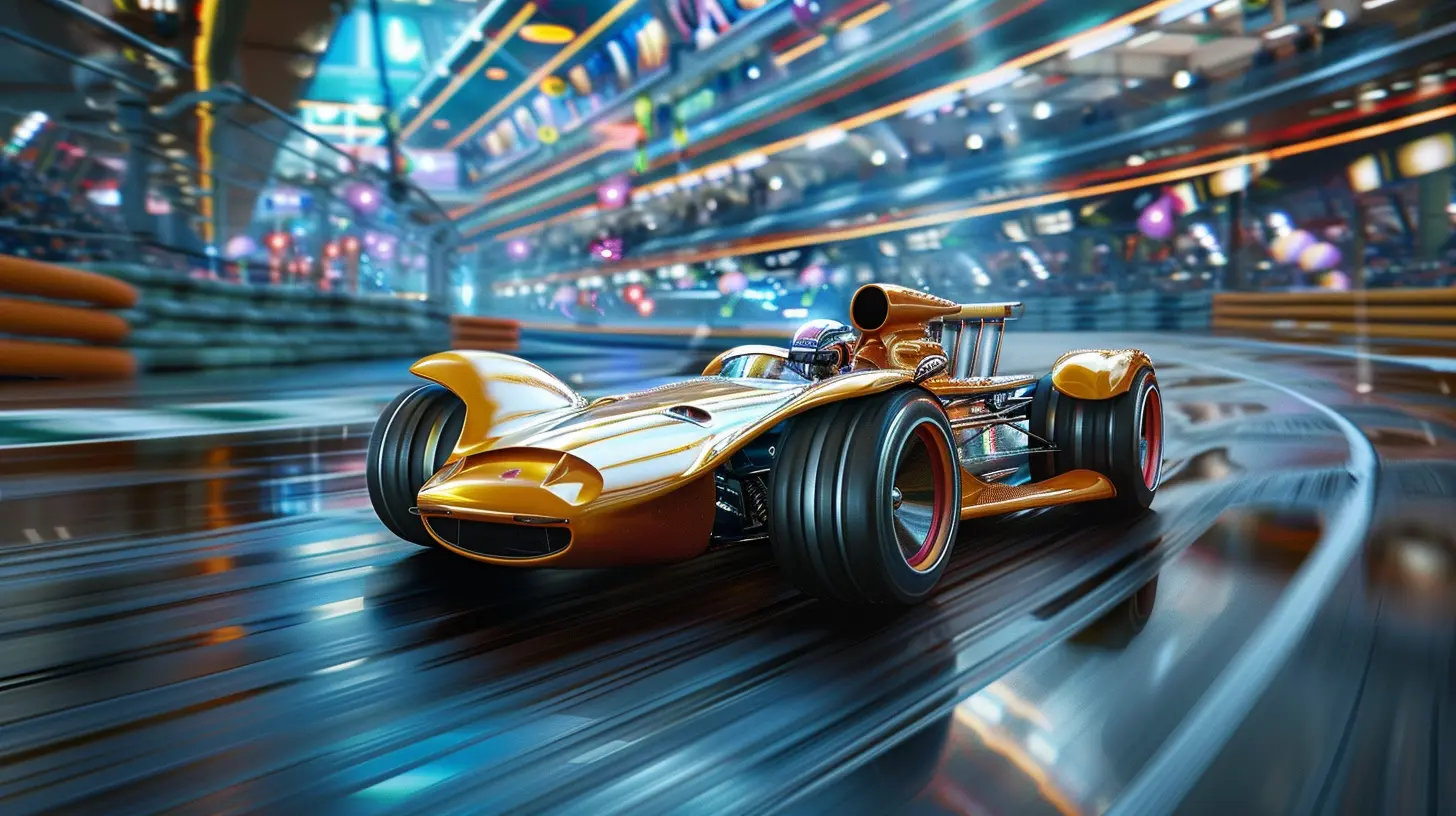24 March 2025
When it comes to high-speed racing games, most of us think about flashy cars, heart-pounding drifts, and nail-biting finishes. But have you ever stopped to wonder what actually makes these virtual cars fly down the track like they’re on rails? Sure, engine power and track grip matter, but there’s another superstar working quietly behind the scenes—aerodynamics.
Aerodynamics is the unsung hero of high-speed racing games. It’s not just for real-life engineers and F1 teams; game developers spend tons of time ensuring these principles are baked right into their games to deliver realistic and immersive experiences. So, let’s hit the gas and dive into how aerodynamics shapes the thrilling world of racing games.
What Is Aerodynamics, Anyway?
Let’s not get too scientific here, but aerodynamics basically boils down to how air interacts with moving objects. Think of it like this: when you’re riding your bike and stick your hand out, you can feel the wind pushing against it, right? That’s air resistance—one piece in the grand puzzle of aerodynamics.In racing games, aerodynamics influences how virtual cars cut through the air, how they stick to the road, and how fast they can go without spinning out of control. It’s not just about looking super cool with a rear wing; it’s the secret sauce behind those lightning-speed straightaways and razor-sharp turns.
Why Aerodynamics Is Crucial in High-Speed Racing Games
If you’ve ever pressed the nitro button in a racing game, you’ve probably noticed your car feels glued to the track. That’s aerodynamics at work! Developers simulate real-world physics to make sure everything feels just right. Let’s break that down a bit more:1. Speed and Drag
Drag is like the annoying friend who keeps pulling you back when all you want to do is go faster. It’s the air resistance that slows your car down. High-performance cars in games often have sleek designs to minimize drag, letting you hit those top speeds.Ever notice how, in some games, swapping a bulky SUV for a low-slung supercar gives you a major speed boost? That’s partly because the supercar has better aerodynamics—it slices through the air like a hot knife through butter.
2. Downforce—Your Car’s Best Friend
Downforce is the invisible hand that keeps your car from floating off the track. Think of it like pressing a toy car down on a table to stop it from sliding. In racing games, it’s the reason your car stays stable when you’re flooring it or taking tight corners.But here’s the twist: too much downforce can slow you down by increasing drag. Yes, it’s a balancing act—like finding the perfect tension in a tug-of-war game. That’s why some games let you tweak your car’s aerodynamics to match the track.
3. Cornering and Stability
Aerodynamics isn’t just about going fast; it’s about staying in control. Imagine trying to drift through a sharp turn without spinning into oblivion. Games simulate aerodynamic stability to make sure you stay in the race and don’t end up in a frustrating crash loop.
How Aerodynamics Shapes Game Design
Alright, let’s talk about how game developers use aerodynamics to make racing games so darn addictive. It’s not just about throwing some fast cars into the mix and hoping for the best. Developers carefully craft every aspect of aerodynamics to keep you glued to your screen.1. Realistic Car Models
Ever admire how detailed the car designs are in games like Forza Horizon 5 or Gran Turismo? It’s not just about aesthetics. Those spoilers, diffusers, and air intakes aren’t just for show—they’re coded to affect how each car handles on the track.Some games even have wind tunnel simulations to calculate drag and downforce in real-time. It’s like they’re running a mini NASA program just for your entertainment.
2. Dynamic Weather Systems
Weather changes everything. A clear sunny day? Great—your car will zip through with minimal air resistance. But add some rain or a headwind, and suddenly your aerodynamic setup matters way more. Games like F1 and Project Cars simulate these effects to keep things challenging and realistic.3. Customization and Tuning
If you’re a gearhead, you know the joy of customizing your car’s aerodynamics. From adjusting the angle of your rear wing to fine-tuning your suspension, games let you get nerdy with settings. Don’t worry if you’re not into micromanaging; the default setups are usually good enough to beat your friends… most of the time.
Popular Racing Games with Impressive Aerodynamic Simulations
If you’re itching to see aerodynamics in action, here are a few racing games that nail the concept:1. F1 Series by Codemasters
This game is basically the holy grail for aerodynamics geeks. From DRS (Drag Reduction System) to real-time tire wear, F1 games let you experience the intricate balance of speed and control. Plus, you can adjust your car’s aero setup for each track. Goodbye, free time.2. Gran Turismo 7
Gran Turismo games are known for their attention to detail, and GT7 is no exception. The game simulates aerodynamics to perfection, whether it’s the slipstream effect when drafting behind another car or the downforce customization options.3. Assetto Corsa
This one’s for the hardcore sim racers. Assetto Corsa’s aerodynamic physics are on another level, giving you a true-to-life racing experience. The learning curve might be steep, but the payoff is worth it.How Aerodynamics Impacts Virtual vs. Real Racing
Here’s a fun question: does aerodynamics in games matter as much as it does in real racing? The short answer is yes—sorta.Virtual Racing (Games)
In games, aerodynamics is a mix of realism and fun. Developers tweak the physics to keep things exciting without making it impossible for casual players. Sure, you might lose some speed if you botch your aero setup, but the game won’t punish you as harshly as a real race car would.Real-Life Racing
In real life, aerodynamics can literally make or break a race. Teams spend millions perfecting every curve of their cars. It’s a cutthroat world where even a 0.1-second aero advantage can secure a win. Luckily, in games, you get all the thrills without the gut-wrenching pressure (or the million-dollar budget).Tips for Mastering Aerodynamics in Racing Games
Ready to dominate the track? Here are a few quick tips to get you started:1. Use Drafting: Tailing another car to reduce air resistance is a classic trick. Just don’t rear-end them—your car isn’t invincible.
2. Adjust Downforce: Tracks with long straights? Reduce downforce for more speed. Tight, twisty circuits? Crank it up for better grip.
3. Study the Track: Knowing when to brake, accelerate, and take advantage of aerodynamics can turn you into an unstoppable force.
4. Practice, Practice, Practice: Aerodynamics is all about feel. The more time you spend experimenting, the better you’ll get.
Final Thoughts
Aerodynamics might not be the flashiest feature in racing games, but it’s absolutely essential for creating that edge-of-your-seat excitement. From mastering high-speed corners to leaving your opponents in the dust on the straights, understanding how aerodynamics works can make a huge difference. The next time you’re playing your favorite racing game, take a moment to appreciate the invisible forces at play—they’re the real MVPs.So, what are you waiting for? Fire up your console or PC and start putting these aerodynamic principles to the test. Who knows—you might just find yourself shaving precious seconds off your lap times!





Denise Blevins
Fascinating insights on aerodynamics’ impact in immersive racing experiences!
April 3, 2025 at 2:39 PM